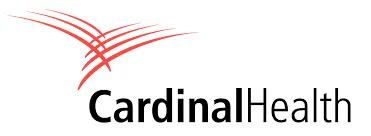© 2025 MJH Life Sciences™ and The Center for Biosimilars - Biosimilars, Health Economics & Insights. All rights reserved.
Breaking Down Biosimilar Barriers: Interchangeability
Part 3 of this series for Global Biosimilars Week, penned by Dracey Poore, director of biosimilars at Cardinal Health, explores the critical topic of interchangeability, examining its role in shaping biosimilar adoption and the broader implications for accessibility.
Biosimilars offer critical savings and increased access to treatments, but they face substantial barriers before reaching patients. This series for Global Biosimilars Week, a worldwide online biosimilar advocacy event hosted by the International Generics and Biosimilars Association, focuses on 3 major areas where obstacles limit access in the US:
- The patent system
- Payer and pharmacy benefit manager (PBM) policies
- Interchangeability
The Center for Biosimilars® is a media partner for Global Biosimilars Week 2024. Each article in this series will shed light on these barriers and suggest steps to enhance biosimilar access, affordability, and equity.
The Impact of the Interchangeability Designation on Patient Biosimilar Access
On June 20, 2024, the FDA published updated draft guidance titled “Consideration for Demonstrating Interchangeability with a Reference Product: Update.” The guidance describes considerations regarding a switching study, or studies, intended to support that a biological product is interchangeable with the reference product.1
The FDA’s approach to switching studies for the interchangeability designation has evolved since the publication of the original guidance in 2019. This updated draft guidance includes recommendations intended to revise the Interchangeability Guidance and to replace certain sections of the document. An important note is that the interchangeability designation is not a clinical designation, but a regulatory designation. Each biosimilar must prove that it is “highly similar to” its reference biologic and that there are no clinically meaningful differences in safety, purity and potency.
With the original guidance in 2019, the FDA required switching studies to ensure the safety and efficacy of biosimilars. With this new guidance, the agency proposed that biosimilar drugs seeking the interchangeability designation may no longer need studies showing the impact of switching from the biosimilar to its reference biologic. For patients in particular, recent studies showed there were no difference in risk serious adverse events and treatment discontinuations between participants who switched between biosimilars and those who did not.2
Conducting switching studies is also expensive for pharmaceutical manufacturers, with average costs ranging from “$100 million to $300 million.”3 Additionally, according to McKinsey, a typical biosimilar can take anywhere from 6 to 9 years from analytical characterization to approval.4 The costs are expensive, and the timeline is burdensome for bringing a biosimilar to market, especially one that has the interchangeability designation. This new guidance could aid in reducing the cost and time needed to bring a biosimilar to market and help to promote biosimilar sustainability.
When biosimilars were first introduced to the market, the FDA’s goal was to use the interchangeability designation to help educate the public about biosimilars. There is a perception that biosimilars with interchangeability are somewhat better than other biosimilars, which is not scientifically supported. This extends to providers, over 60% of which said they would only feel comfortable prescribing adalimumab biosimilars that have the interchangeability designation.5
Once a biosimilar product is designated as an interchangeable biologic by the FDA, the biosimilar product may be substituted for the reference product by a pharmacist other than the health care provider who wrote the original prescription (albeit subject to state law). The interchangeability designation is only relevant to dispensing, not prescribing.
"Both biosimilars and interchangeable biosimilars meet the same high standards of biosimilarity for FDA approval and both are as safe and effective as the reference product," said Sarah Yim, MD, director of the Office of Therapeutic Biologics and Biosimilars at the FDA.6
Increasing the number of biosimilars on the market is paramount. More biosimilars means more options for patients. If a patient’s preferred biologic medicine is out of stock, it’s important that they have other potential options for treatment. Increasing the number of biosimilars on the market is important to the healthcare system, with increasing health care costs, the ability to drive down costs and provide savings to the healthcare system with biosimilars is incredibly important.
For example, according to the 2024 US Generic & Medicines Savings Report, “in 2023, savings from the use of biosimilars increased by more than 30 percent from the previous year, to $12.4 billion. Since their entry to market in 2015, biosimilars have generated $36 billion in savings for America’s patients and the US health care system.”7 By removing barriers for biosimilar manufacturers, increasing speed to market and by increasing patient education and awareness around biosimilars as a safe and effective treatment option, we can increase patient access to these medicines and bring down total costs to the health care system.
References
1. Considerations in demonstrating interchangeability with a reference product: update. FDA. June 20, 2024. Accessed November 13, 2024. https://www.fda.gov/regulatory-information/search-fda-guidance-documents/considerations-demonstrating-interchangeability-reference-product-update
2. US FDA proposes to remove switching study requirement for biosimilars. Reuters. June 20, 2024. Accessed November 13, 2024. https://www.reuters.com/business/healthcare-pharmaceuticals/us-fda-proposes-remove-switching-study-requirement-biosimilars-2024-06-20/
3. FDA’s updated guidance on interchangeable biosimilars gets mixed response. Regulatory Focus. August 22, 2024. Accessed November 13, 2024. https://www.raps.org/news-and-articles/news-articles/2024/8/fda-s-updated-guidance-on-interchangeable-biosimil
4. Three imperatives for R&D in biosimilars. Mckinsey. August 19, 2024. Accessed November 13, 2024. https://www.mckinsey.com/industries/life-sciences/our-insights/three-imperatives-for-r-and-d-in-biosimilars
5. Cardinal Health 2023 biosimilars report. Cardinal Health. February 2023. Accessed November 13, 2024. https://www.cardinalhealth.com/en/product-solutions/pharmaceutical-products/biosimilars/biosimilars-report.html
6. US FDA proposes to remove switching study requirement for biosimilars. Reuters. June 20, 2024. Accessed November 13, 2024. https://www.reuters.com/business/healthcare-pharmaceuticals/us-fda-proposes-remove-switching-study-requirement-biosimilars-2024-06-20/
7. 2024 U.S. generic & biosimilar medicines savings report. AAM. September 2023. Accessed November 13, 2024. https://accessiblemeds.org/sites/default/files/2024-09/AAM-2024-Generic-Biosimilar-Medicines-Savings-Report.pdf




